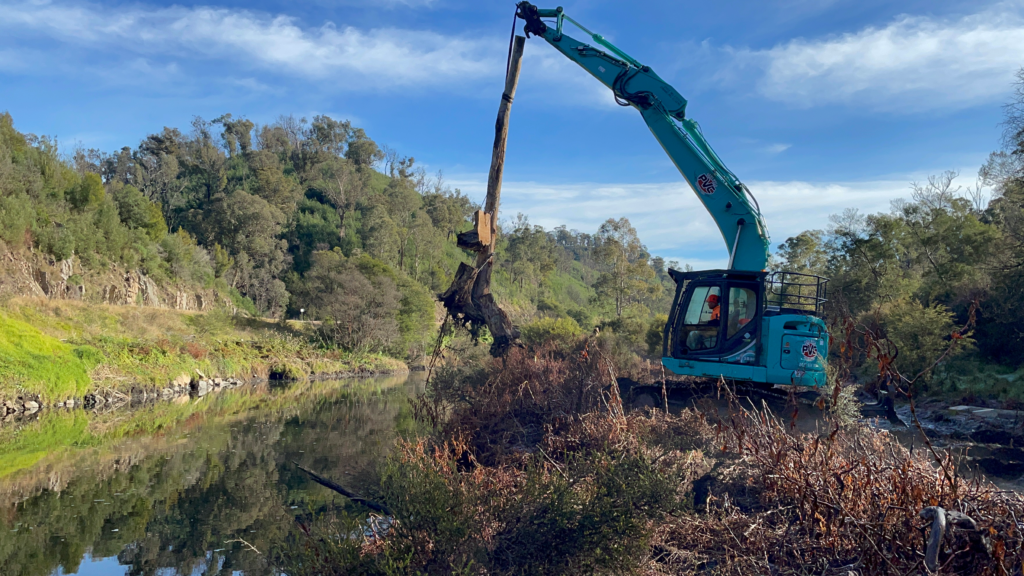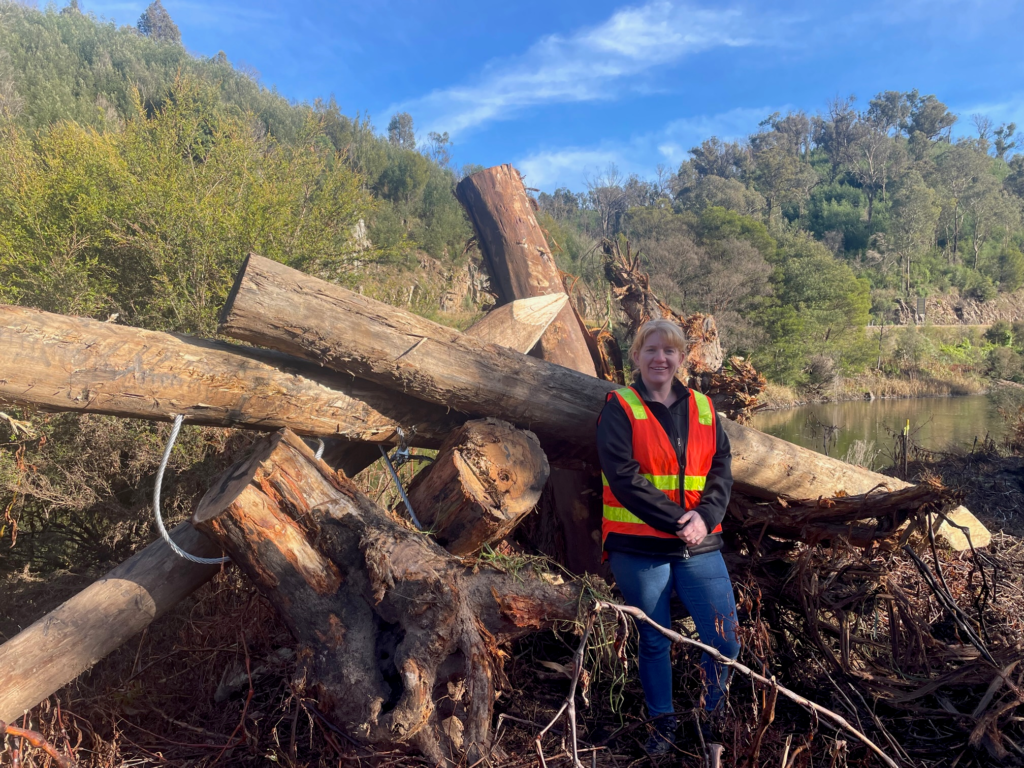We promised the platypus in the Tambo River some home renovations, and we’ve delivered on our pledge!
The East Gippsland Catchment Management Authority (EGCMA) have placed a series of wood structures in two locations north of Bruthen that will play essential roles in supporting platypus populations. The wood structures will become home to aquatic plants to grow on, water bugs to live on and also provide food for platypus and give platypus shelter.
The 2019/2020 Black Summer bushfires have affected the Tambo catchment, with increased instream sediment entering the river following rain events. Sadly, this is a big concern for the already vulnerable platypus populations, affecting their habitat and food source.
“This project is a partnership with many activities and on-ground works that will improve the environment at these sites.” Said acting EGCMA CEO, Bec Hemming.
Project partner Arthur Rylah Institute (ARI) conducted water bug surveys before the structures were installed and will repeat these surveys in spring to compare any changes in types and density of bugs.
The Natural Resource Management crew from Gunaikurnai Land and Waters Aboriginal Corporation (GLaWAC) will be doing weed control and planting a variety of native species along the riverbank. This vegetation, once established, will complement the instream structures by providing different habitats for bug species, shade for the water and will help reduce sediment runoff into the river.
The local Swifts Creek Primary and Secondary College students and the Swifts Creek Landcare group will also contribute to this project with planting, signage and assisting ARI with further surveys.
Platypus was listed under the Flora and Fauna Guarantee Act 1988 as vulnerable in Victoria in 2021, in recognition of its decline in the last 30 years. The species is threatened by a range of human activities, primarily related to changes in land use and water condition.
We are grateful to all project partners for getting this work done and contributing to improving the Tambo River and platypus habitat. This project was funded by the Australian Government’s Department of Industry, Science, Energy and Resources.




